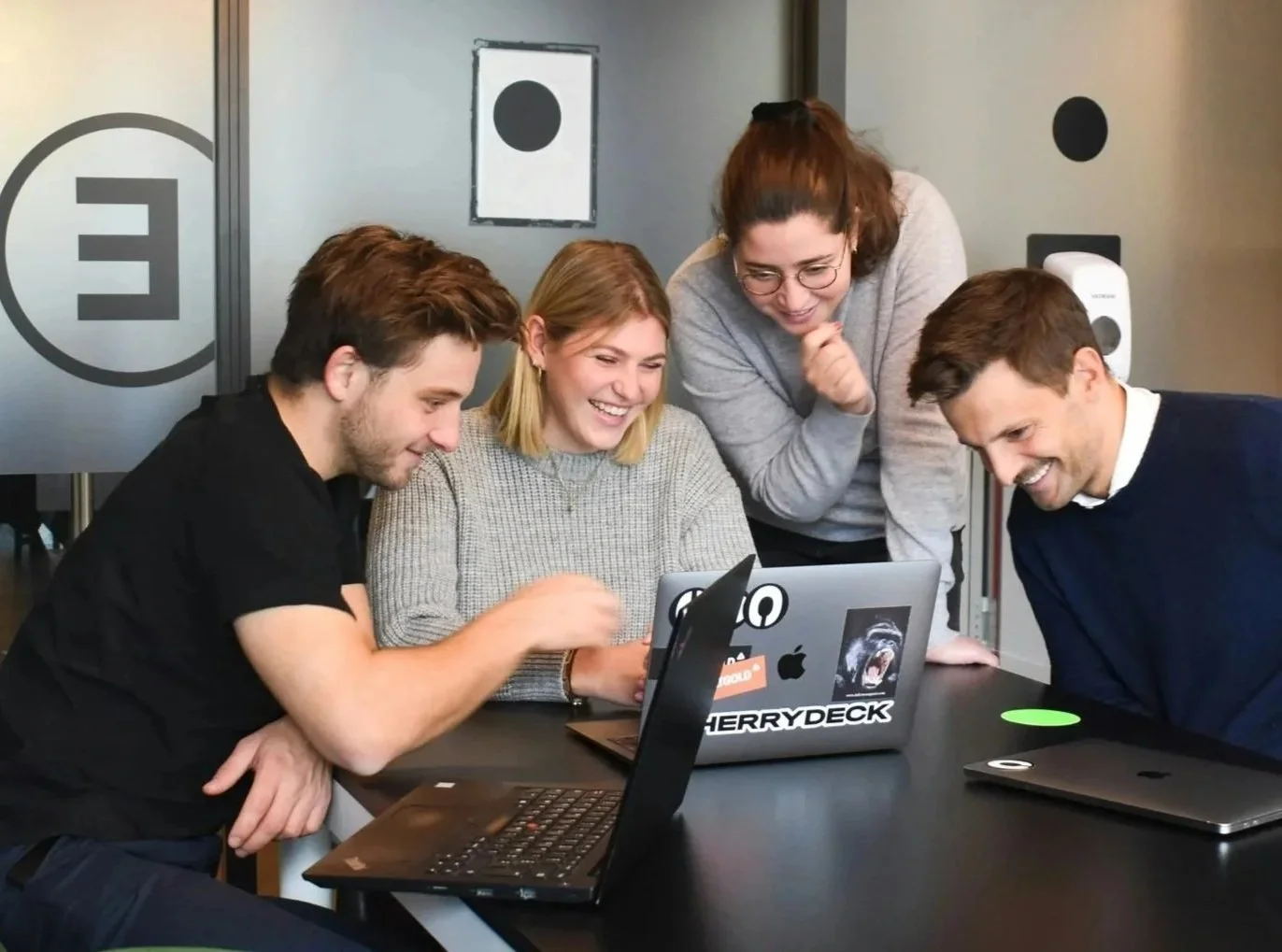-
Communti is a platform designed to help tech graduates and career transitioners stay on top of industry trends and learn from them quickly and effectively. Unlike platforms that focus solely on long-form courses or unstructured community-driven content, Communti delivers curated, goal-oriented insights in a format that’s easy to consume and revisit.
-
As the UX Designer on the Communti project, I was responsible for guiding the team through a user-centered design process and translating research insights into actionable solutions.
-
New tech graduates and career-transitioners struggle to stay updated on industry trends due to overwhelming amounts of information online. Existing platforms are either too long-form or too unstructured, leaving users feeling lost and unsure where to start. This creates an opportunity for a curated, goal-oriented platform that delivers quick, relevant insights and helps users stay engaged.
-
Our goal was to create a platform that makes it easy for new tech graduates and career-transitioners to stay informed without feeling overwhelmed. We aimed to curate high-quality, relevant industry content, present it in a quick and digestible format, and provide structured goals that keep users engaged and motivated to continue learning.
Discover
Click to ViewUser Research Insights & Pain Points
We interviewed recent graduates from universities and tech bootcamps to learn about their struggles with staying current and informed.
Key Insights:
Want: Curated, simple, and up-to-date content
Need: Time-saving resources — avoid overly long or irrelevant material
Pain: Feeling lost and overwhelmed by too much information online
Goal: Confidence they’re starting in the right place
New grads feel overwhelmed by the flood of online information and need curated, time-saving resources to feel confident they’re starting in the right place.
Define
Persona
Click to view
User Persona: Dianne Smith
Dianne represents early-career tech professionals transitioning from bootcamps into their first industry role. She’s tech-savvy, collaborative, and motivated, but faces challenges in turning her training into real-world experience.
Goals
Break into a well-paying role in tech.
Build and showcase a strong portfolio of work.
Gain mentorship and guidance from experienced professionals.
Be part of a supportive community to grow and learn.
Needs
Real projects to demonstrate skills.
Constructive feedback and mentorship.
Exposure to industry-standard tools and practices.
Peer support and encouragement.
Challenges
Limited professional experience makes it hard to stand out.
Knowledge gaps between training and workplace expectations.
Budget constraints limit access to premium resources.
Concern about making the wrong career choice.
Key Insight:
Dianne is motivated but feels isolated and unsure of how to bridge the gap from learning to employment. A successful design solution should focus on hands-on opportunities, mentorship, and community support to help her transition confidently into the tech industry.
Ideate
After exploring the user’s pains, gains, emotional journey, and user stories, we identified one main problem: helping users access, save, and organize relevant content without feeling overwhelmed.
Our “How Might We” (HMW) solutions include:
Building a bookmark feature so users can save and revisit content.
Creating a recommendation algorithm to deliver personalized, relevant feeds.
Allowing users to organize bookmarks into folders or stacks for easier navigation.
Enabling category-based following so users can curate content around their interests.
Through MoSCoW prioritization, we determined:
Must Do: Basic bookmarking function, saving content IDs to a database, and the ability to view saved items.
Should Do: Folder organization and bookmark button interactions.
Could Do: Advanced features like filtering by keywords, generating quizzes, summarizing content, and tracking time on screen.
Won’t Do: Automatically grabbing content from the internet, or building a complex recommendation system at this stage.
Validate
Prototype
Usability Testing Results
We conducted usability testing with 13 participants to evaluate Innotrack’s core features.
Completion Rate: 9 out of 13 participants successfully completed the tasks.
Key Finding: Participants understood the concept but some missed or underutilized the bookmark and favoriting features.
Next Steps
Refine the bookmarking and favoriting UI to make these features more prominent and intuitive.
Explore microinteractions (e.g., animations, hover states) to encourage engagement.
Conduct follow-up testing to validate improvements and increase task completion rates.
Conclusion
This project helped us understand the real struggles that recent graduates and career changers face when trying to keep up with the fast pace of the tech industry. Many shared that they felt overwhelmed by the amount of information available and unsure where to begin. Our design focused on making that first step easier by offering clear, curated content and tools like bookmarks and favorites to help them stay organized.
During usability testing, most participants were able to complete their tasks, but we noticed that some missed the bookmarking and favoriting features. Our next steps will be to improve the visibility and usability of these tools so users can create a learning experience that feels personal and manageable.
This case study reminded us that good design is about more than solving problems — it is about giving people confidence, reducing their stress, and helping them move forward with clarity.


